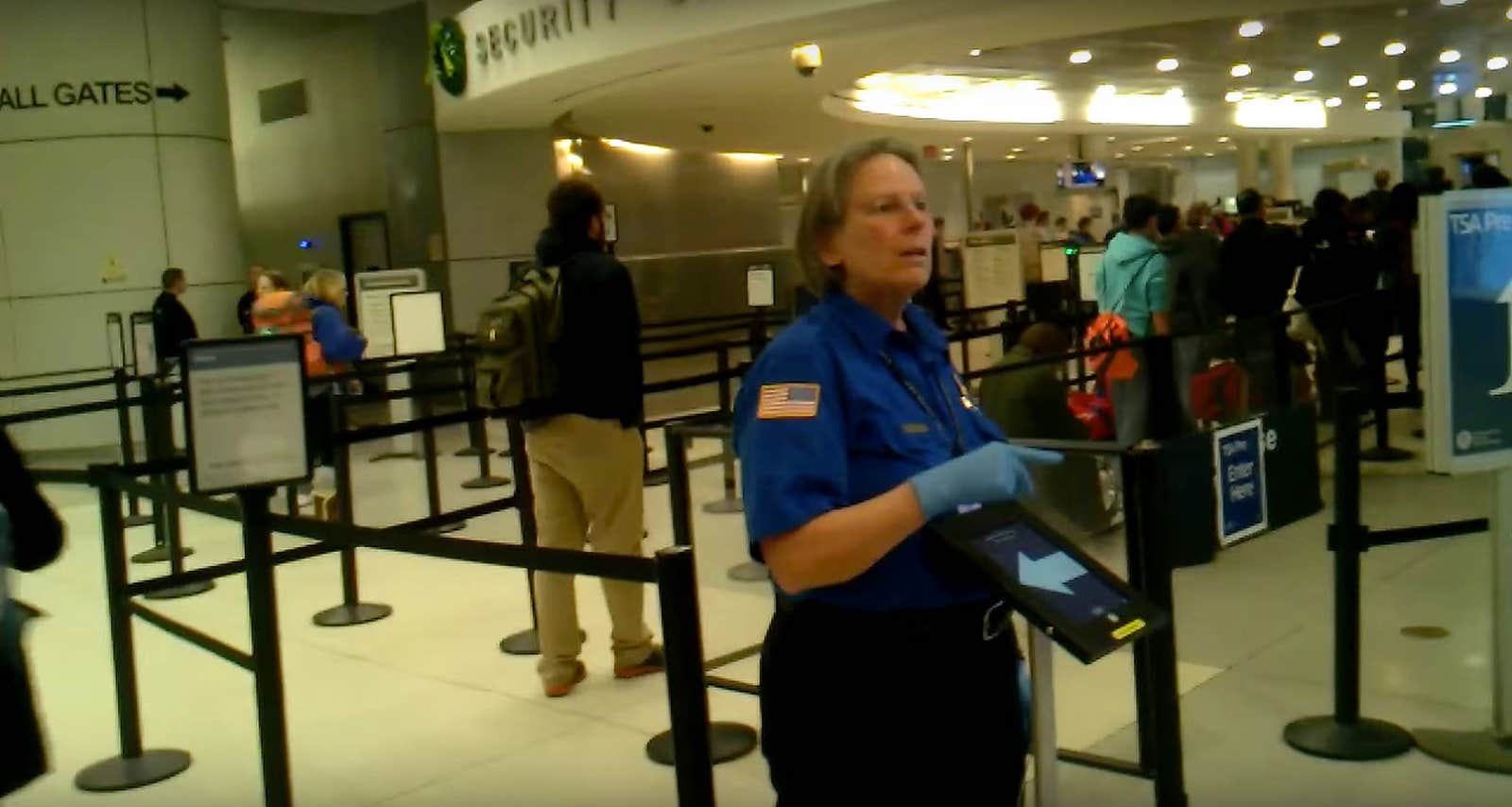It doesn’t matter if you believe in the government’s ability to benefit the greater good or you think it should be as small as functionally possible; when the government wastes money, it’s frustrating. So reports that the Transportation Security Administration (TSA) dropped over $1 million on a simple app is sure to get some feathers ruffled.
The app in question is the TSA Randomizer, an iPad app debuted by the agency in 2014 and does exactly what the name suggests. A TSA agent armed with an iPad taps the device screen and an oversized arrow points either to the left or the right. The randomly selected direction is meant to push people through the lines faster.
In theory, the app has saved taxpayer money. It’s part of a larger initiative launched by the TSA called “managed inclusion.” The agency asked for a $100 million cut to its 2015 budget after pursuing its risk-based security techniques, though it has since blamed budget cuts for increased wait times at airports.
What looks considerably less like penny-pinching efforts and more like government excess, though, is a charge that the TSA spent an upwards of $1.4 million dollars on an app that can literally be built in 10 minutes.
The report was brought to light by a Freedom of Information Act request filed by Kevin Burke, an engineer at courier startup Shyp. Burke first became curious about the app in late 2014. He told the Daily Dot he was “curious how much something like that cost the TSA, how the procurement process works, what the specs looked like.”
Really want to know how big the contract was for the TSA Randomizer ipad app. Literally random() and then a left or right arrow
— Kevin Burke (@derivativeburke) December 6, 2014
Months after filing the FOIA request, Burke was presented with a contract between the TSA and IBM that totaled $1.4 million. Burke highlighted what appeared to be an excessive expenditure on his blog in a post titled “The TSA Randomizer iPad App Cost $1.4 Million.”
In the post, Burke notes that the contract he received totaled $336,000 and was part of a larger block of contracts won by the technology company that amounted to the $1.4 million figure.
Either way, it’s a jaw-dropping amount for an app that should consist of very basic code that, according to Burke, “shouldn’t take more than a week to do the whole thing” even when accounting for special procedures that would have to be taken into account to build a private app for a government agency.
Both of the numbers originally attached to the TSA Randomizer app by Burke are overblown, according to the TSA. The agency said the app cost $47,400 in total to develop. The full cost of the development contract with IBM included several other projects.
IBM did not provide direct comment, but deferred to the information provided by the TSA on the matter.
Burke said he wished the TSA had made that information clear on the contract he received, as it would have “avoided a lot of the confusion about the numbers.” In reference to the figure provided by the TSA, Burke said, “all things considered I think $47,000 is pretty reasonable for an app like this.”
Sorry I didn’t want to wait another 14 months for clarification on the contract before writing an article
— Kevin Burke (@derivativeburke) April 4, 2016
That’s not to say there isn’t waste attached to government contracts; according to a 2013 report conducted by the nonpartisan Government Accountability Office, a review of 590 technology investments made between 2008 and 2013 revealed 12 duplicative projects that accounted for nearly $321 million in IT spending.
Many projects for the government require a considerable amount of understanding of older technologies and legacy systems, which adds time and expense to the project. The IRS, for example, is still using the COBOL programming language, which was developed in 1959 and, according to IRS Commissioner John Koskinen, “was last hot in the 1980s.”
Much of the IRS’s $2 billion information technology operations budget goes toward upgrading the organization’s systems, which were originally built during the John F. Kennedy administration. Koskinen described it as “driving a Model T that now has a great GPS system and wonderful sound system, [and] has a rebuilt engine,” during a 2015 panel in front of the Senate.
“You’re not going to get a modern build system, or do anything quickly, or cheaply when you’re writing or modifying COBOL code written thirty years ago,” Burke said. He pointed to groups like the U.S. Digital Service, 18F, and Code for America as the best hope for dragging government organizations into the 21st century when it comes to IT.
The government is also currently pursuing public comment on a plan to adopt an open source code model for its development projects. The policy would require software developed for or by the federal government to be made available for sharing and re-use across all Federal agencies. Burke said he hoped the plan would encourage code reuse, but noted, “it’s hard to say because there are so many departments and so many legacy systems.”
If concerned parties want to critique the government’s current IT infrastructure for waste or redundancy, they needn’t search too hard. But of the major offenders, the TSA app appears not to be one—no matter how more critical outlets would like to present the costs.
H/T Geek.com


